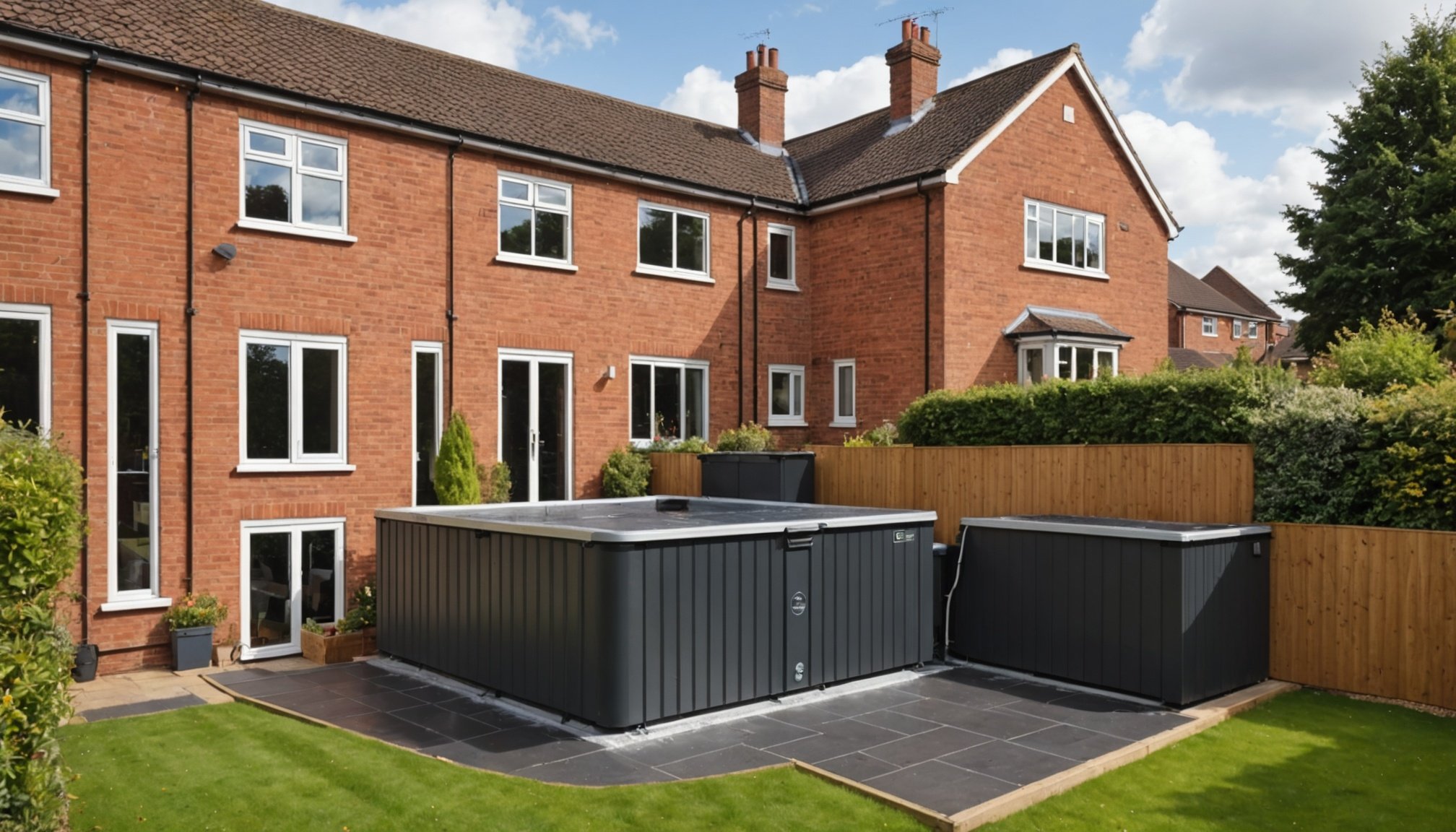Rainwater harvesting presents an innovative solution for UK mid-terrace homeowners seeking sustainability and efficiency. Integrating a seamless system can reduce water bills and provide an eco-friendly resource for gardening and household use. This guide offers practical steps, insights, and tips to effortlessly implement rainwater harvesting in your home. Discover how this transformative approach not only benefits the environment but also enhances your living space.
Understanding Rainwater Harvesting Systems
Rainwater harvesting is an innovative solution for those interested in sustainable living. It involves collecting and storing rainwater for various uses, reducing reliance on mains water. A typical system comprises several components: a catchment area (usually a roof), gutters, downpipes, a storage tank, and a distribution system. These elements work together to collect, filter, and store rainwater for later use.
Avez-vous vu cela : Transforming a UK Cottage: A Complete Guide to Harnessing Greywater for Sustainable Garden Irrigation
Implementing rainwater harvesting in mid-terrace homes offers numerous benefits. Firstly, it reduces water bills by supplementing water supply for non-potable uses like gardening, toilet flushing, and laundry. Additionally, it mitigates flood risks by managing stormwater runoff, which is especially beneficial in urban areas. Furthermore, it promotes sustainable living by conserving natural water resources and reducing carbon footprints.
In the UK, specific regulations and guidelines govern the installation of rainwater harvesting systems to ensure safety and efficiency. The British Standards Institution provides guidelines under BS 8515:2009+A1:2013, covering design, installation, and maintenance aspects. Compliance with these standards ensures that systems are safe, efficient, and environmentally friendly. Moreover, planning permissions might be required, depending on the property's location and the system's scale. Understanding these regulations is crucial for a successful and compliant installation.
Dans le meme genre : Top Materials for Chic and Long-Lasting Kitchen Countertops in Your UK Family Home
Step-by-Step Guide to Integration
Integrating a rainwater harvesting system into a mid-terrace home can be a rewarding project. By following a structured approach, you can ensure a smooth installation process.
Pre-Installation Considerations
Before beginning the installation process, assess your home's system design needs. Consider factors such as roof size, rainfall patterns, and water usage requirements. These elements will influence the system's capacity and efficiency. Additionally, check local regulations to ensure compliance with any required permissions or standards.
System Selection
Selecting the right system for your home is crucial. Evaluate different options based on their system design and compatibility with your property's structure. Consider systems that offer scalable solutions, allowing for future expansion if necessary. Ensure that the chosen system aligns with your water usage goals and budget constraints.
Installation Steps
- Site Preparation: Clear the area where the storage tank will be placed. Ensure a stable and level foundation.
- Gutter and Downpipe Installation: Install or modify existing gutters and downpipes to direct rainwater into the system.
- Tank Installation: Position the storage tank in the prepared area. Connect the downpipes to the tank inlet.
- Filtration System Setup: Install any necessary filters to prevent debris from entering the tank.
- Distribution System Integration: Connect the tank to the distribution system for water usage.
By following these steps and incorporating DIY tips, you can successfully integrate a rainwater harvesting system into your home.
Legal and Regulatory Considerations
When installing a rainwater harvesting system in the UK, understanding the legal requirements is crucial. Compliance with UK building regulations ensures the system's safety and efficiency. The British Standards Institution's guidelines, particularly BS 8515:2009+A1:2013, provide detailed instructions on design, installation, and maintenance, which must be adhered to.
Necessary Permits and Approvals
Before installation, securing the necessary planning permission is often required. This depends on the property's location and the system's scale. Local councils can provide guidance on whether your project needs approval. It's essential to check these requirements early to avoid complications.
Building Regulations
UK building regulations cover various aspects of rainwater systems, including structural integrity, water quality, and environmental impact. These regulations ensure that the system is not only effective but also safe for domestic use. For instance, filtration systems must meet specific standards to prevent contamination.
Importance of Compliance
Adhering to local laws and regulations is vital for a successful installation. Non-compliance can lead to legal issues and potential fines. Moreover, compliant systems contribute to sustainable living by reducing environmental impact and promoting efficient water use. Always consult with professionals to navigate these legal landscapes effectively.
Cost Analysis and Financial Benefits
Understanding the cost breakdown of installing a rainwater harvesting system is essential for evaluating its feasibility. Initial costs typically include the purchase of equipment, installation fees, and any necessary modifications to existing structures. However, these upfront expenses can be offset by significant long-term savings. By reducing reliance on mains water, homeowners can lower their water bills, leading to a favourable return on investment over time.
Financial Incentives and Grants
In the UK, various financial incentives and grants are available to encourage sustainable practices. These can significantly reduce the initial outlay for rainwater harvesting systems. Local councils and environmental agencies often offer subsidies or rebates to support eco-friendly home improvements. It's advisable to research and apply for these incentives to maximise financial benefits.
Case Studies
Numerous case studies demonstrate the cost-effectiveness of rainwater harvesting installations. For instance, a mid-terrace home in London reported a 30% reduction in water bills within the first year of installation. Another case in Manchester highlighted a five-year return on investment, thanks to both savings and government grants. These examples underscore the financial viability of rainwater systems, making them an attractive option for homeowners seeking sustainability.
Maintenance and Best Practices
Regular maintenance is crucial for the optimal performance of rainwater harvesting systems. Begin with these routine maintenance tips: inspect and clean gutters and downpipes monthly to prevent blockages. Check the storage tank for debris and sediment build-up every six months, and clean filters regularly to maintain water quality.
Addressing common issues promptly can prevent larger problems. For instance, if water flow decreases, inspect for clogs in the filtration system or distribution lines. Leaks around the tank or pipes may indicate worn seals, which should be replaced to avoid water loss.
Troubleshooting strategies are essential for maintaining system efficiency. If the system isn't collecting enough water, evaluate the catchment area for obstructions or damage. Ensure downpipes are securely connected to the tank, as loose fittings can lead to inefficiencies.
Adhering to best practices enhances the benefits of rainwater harvesting. Regularly monitor water levels and consumption to optimise usage. Implementing a first-flush device can improve water quality by diverting initial runoff, which often contains contaminants.
By following these system upkeep strategies, homeowners can enjoy a reliable and sustainable water supply, maximising the system's environmental and financial benefits.











